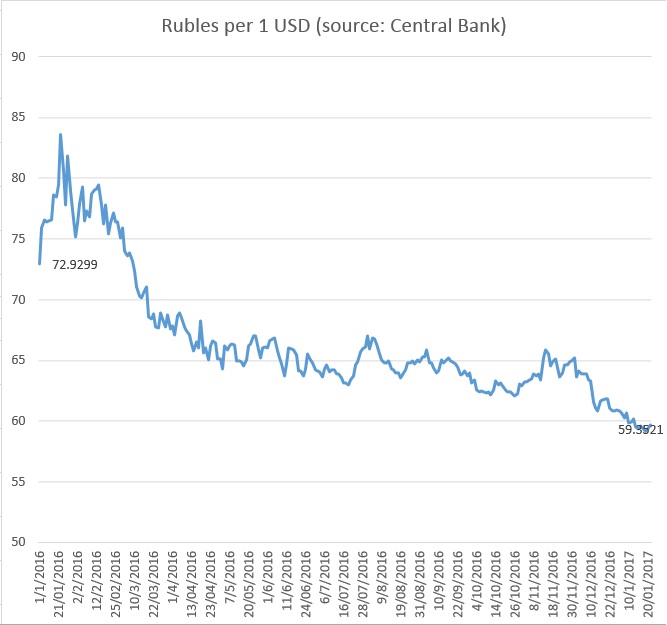Claim in 2017: "Because we [the U.S.] have stood firm, Russia is now—despite the boasts of its leaders—plagued by dwindling financial reserves, a historically weak ruble and poor international relations."
Source of the claim: outgoing U.S. Secretary of State John Kerry (Jan. 2017)
The Russian currency traded at more than 59 rubles to the dollar in the first three weeks of January 2017, according to XE.com's data on historical exchange rates of major currencies and to Russia's Central Bank. According to XE, the ruble's historical low came in January 2016 when a dollar could buy more than 80 rubles. The ruble has been appreciating against the dollar in the year since then, becoming the world's best performing national currency in 2016, according to Bloomberg. It's also worth noting that the predominant view among experts on the Russian economy is that the single largest factor behind changes in the exchange rate of the Russian ruble is the price of oil, not Western sanctions. See, for instance, a recent study of the causal relationship between the price of oil and the rate of the Russian ruble by Tomas Urbanovsky.

